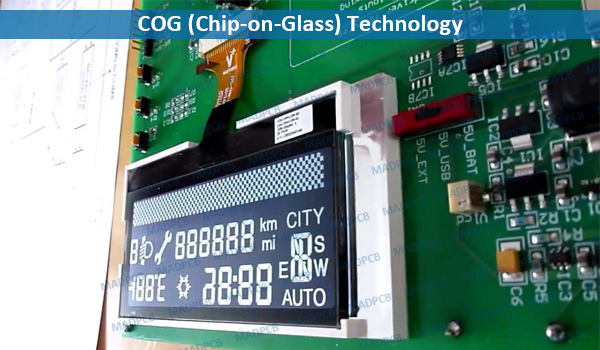COG (Chip on Glass) is a display packaging technology, and COG is also a variation of TAB, where a IC chip is mounted directly onto the ledge of a piece of glass – typically an liquid crystal display (LCD), sometimes an OLED driver ICs. The IC is bonded with an anisotropic conductive film (ACF), which facilitates the mechanical adhesion, as well as the conduction from the IC to the glass.
A chip-on-glass display is a display with an integrated display driver. This driver chip is located directly on the glass of the display, therefore “Chip-On-Glass”. Chip-on-glass technology is a modern technology for the cost-effective production of high-quality displays. All EA DOG displays are manufactured using chip-on-glass technology. These display are very flat and can be combined with a wide variety of lighting (including RGB). Thanks to pins, COG displays are easy to assemble and versatile (also as a single piece). The test board with USB interface enables simple testing of these chip-on-glass display.
COG (chip on glass) technology has been developed for large-capacity and high-resolution liquid-crystal displays (LCDs). Recent advances in lap-top computers have increased demand for LCD displays with full color capacity, increased resolution, and more pixels. Additionally, LCD packaging requires a fine-pitch packaging method. COG technology has been developed to meet these requirements.

